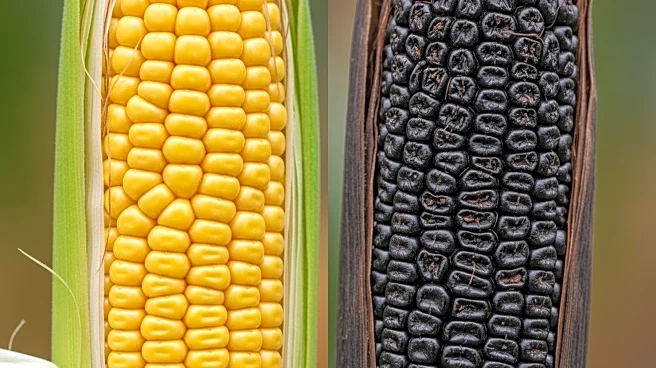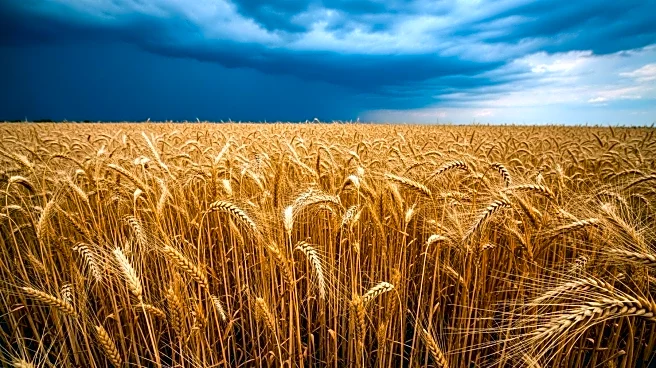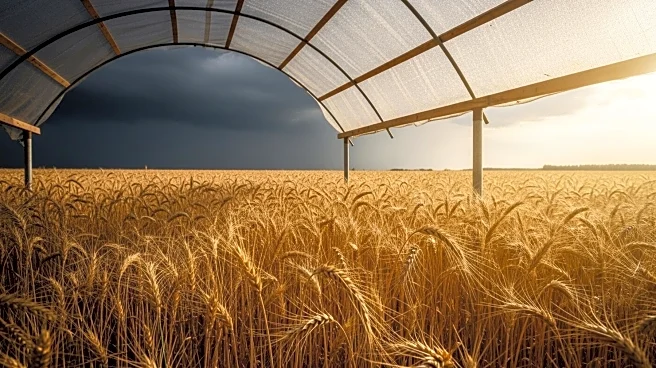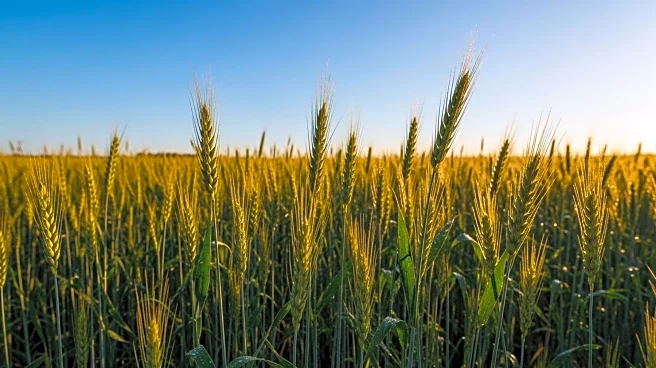What is the story about?
What's Happening?
Farmers in the Midwest are facing significant challenges due to a fungal disease known as tar spot, which has been exacerbated by a summer of wet, humid weather. This disease manifests as small, raised black spots on corn leaves, eventually leading to leaf browning and drying. Chad Bell, a farmer in Mercer County, reports losing 30 to 40 bushels per acre due to tar spot, marking the first time he has had to separate his harvest because of the disease. The fungus weakens corn stalks and reduces kernel weight, impacting overall yield. Despite strong corn yields this year, the disease pressure combined with low crop prices is affecting farmers' profitability.
Why It's Important?
The spread of tar spot poses a significant threat to the agricultural industry in the Midwest, a region heavily reliant on corn production. The disease not only reduces yield but also affects the quality of the crop, leading to economic losses for farmers. With crop prices already low, the additional burden of disease pressure further strains farmers' financial stability. This situation highlights the need for effective disease management strategies and potential research into resistant crop varieties to mitigate future impacts.
What's Next?
Farmers are likely to continue monitoring their fields closely for signs of tar spot and may need to adjust their harvesting strategies to minimize losses. The agricultural community may push for more research into fungicides or resistant corn varieties to combat the disease. Additionally, discussions around crop insurance and financial support for affected farmers could become more prominent as stakeholders seek solutions to mitigate economic impacts.
AI Generated Content
Do you find this article useful?















